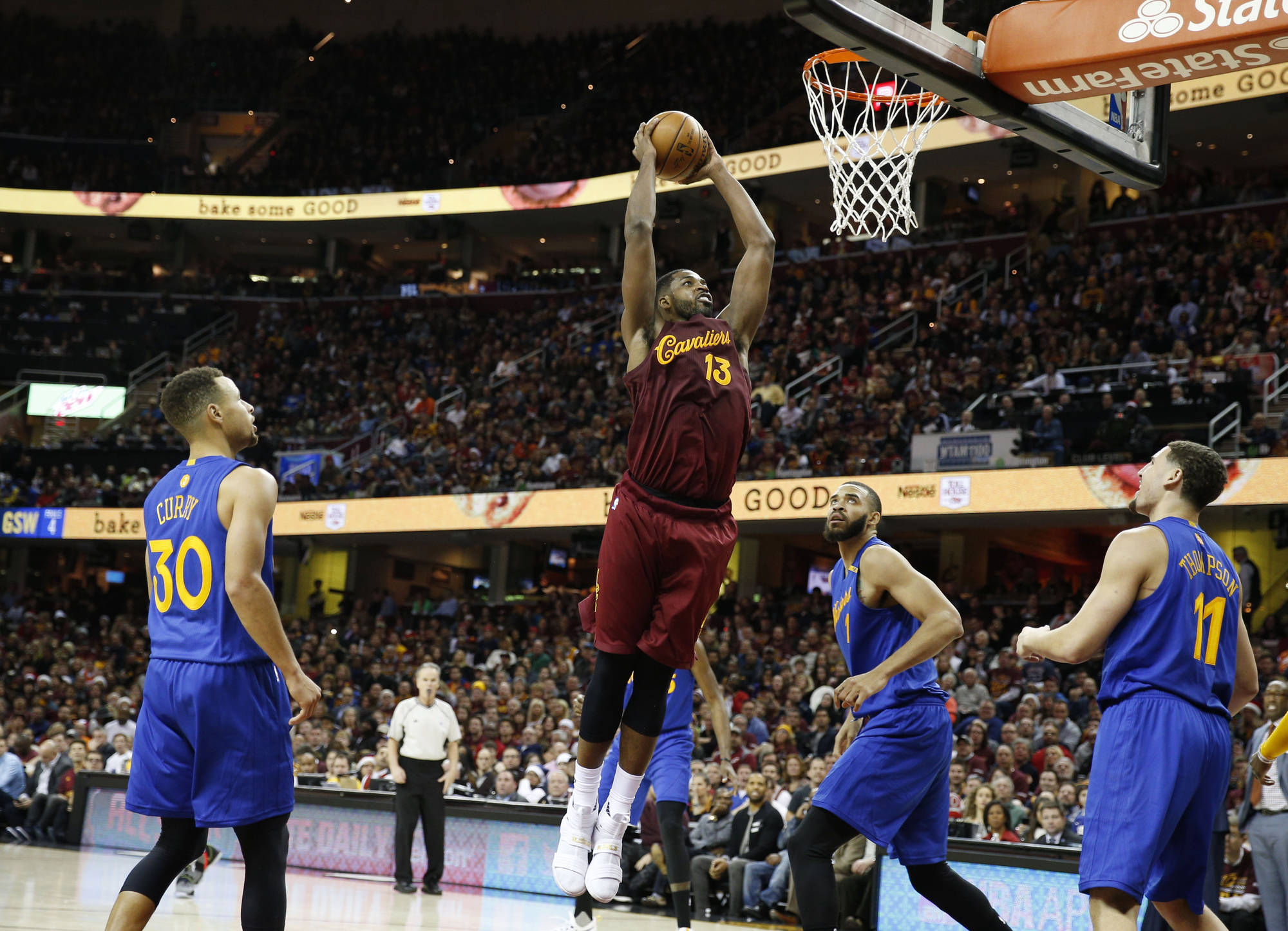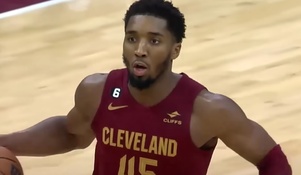The Importance of the NBA "Big Man"
For the last decade or so, the NBA has been a guard-oriented league. The teams with the best guards have generally won more games than those with a dominant “big man.” An example of this is when the Kobe Bryant-led Lakers defeated an Orlando Magic team which was led by a young, dominant Dwight Howard in 2009. At the time, Kobe was at the tail end of his prime and still playing as one of best, if not the best, players in the NBA. Kobe averaged an insane 32.4 PPG and 7.4 APG earning him the Finals MVP that year. Howard, on the other hand, did not play poorly at all. He averaged 15.4 PPG, 15.2 RPG, and an equally crazy 4.0 BPG in the 5-game series. Howard had one of the best series performances by a post since Tim Duncan when he battled the Pistons in the 2005 NBA Finals and put up very similar stat lines – Duncan averaging 20.6 PPG, 14.1 RPG, and 2.1 BPG while Ben Wallace, the Pistons primary big man at the time, averaged a solid 10.7 PPG, 10.3 RPG, and 3.0 BPG in a 7-game series. The main point being guards can dominate games, and in some rare cases an entire series, but without a solid “big man,” no team can win the NBA Finals.

The most recent example of this is last year’s NBA Finals between the Cleveland Cavaliers and the Golden State Warriors. There are a lot of factors that can be extracted as the primary reason the Cavaliers came back from a 3-1 series deficit, but ultimately, I believe it came down to defense and rebounding. Both teams have prolific offenses, the Warriors more so than the Cavs, but as the adage goes “Defense wins championships.” In this case, it should be changed to “Rebounds win championships.” Cleveland finished the series with 309 total rebounds while the Warriors finished with 279 rebounds. 20 rebounds may not seem like a lot, but Cleveland had 10 more offensive rebounds than the Warriors did which are an extra 20 points, or more because of the importance of 3 pointers in today’s game, the Cavaliers had the opportunity to get over the Warriors. In a close series, like the 2016 NBA Finals was, that is huge. Yes, LeBron James and Kyrie Irving made the plays to win the Cavs that series, but Tristan Thompson’s 27 total offensive rebounds should not be overlooked. The next highest total was from LeBron James with 17 total offensive rebounds while the Warriors leader was Andre Iguodala, who had 16 total offensive rebounds. Now, again I’ll state that rebounds are not the only factor there is to winning the NBA Finals. However, the Cavs won this particular series because of the emphasis they put on their “big man” outperforming the other teams “big man.”
The Evolution of the NBA "Big Man"
What does the term “big man” even mean anymore? I put “big man” in quotations because the way the NBA games are played now are a lot different than they were in the early 2000s and earlier. Players like Shaquille O’Neal, Bill Russell, Patrick Ewing, and Hakeem Olajuwon are some of the most recognizable and dominant big men in NBA history. I did not put the term “big men” in quotations there because those players are the archetypal big men. They played in the paint, the posted their defenders up on the block, and their offense relied on their ability to score, rebound, and play defense on a nightly basis. Thanks to coaches like Mike D’Antoni and players like Stephen Curry, the days of the only low-post scoring and defending big man are gone. D’Antoni emphasizes athleticism and three-point shooting to try and outscore his team’s opponents while giving up defense and rebounding. It worked with the Phoenix Suns, for the most part, until GM Steve Kerr traded wingman Shawn Marion and backup guard Marcus Banks to the Miami Heat for the shell of Shaquille O’Neal in 2008. This transaction basically killed all the work the Suns had done to fit D’Antoni’s style of play. Long story short, an eleven-year-old me asked: “Why are we trading for a slow, washed up Shaq?” If an eleven-year-old could figure that out, why couldn’t Steve Kerr? I digress. The NBA was too quick for Shaq, the traditional big man, in 2008, and with more players in the league now like Stephen Curry, who shoot transition threes and push the tempo naturally, the NBA is even faster than it was in 2008. This has led to the evolution of the NBA “big man.”
[Giannis Antetokounmpo Was Born To Be a Point Guard]The first evidence of this transition was in 2012 when the All-Star Game lineups no longer had 2 guards, 2 forwards, and a center for each team, but 2 backcourt players and 3 front court players. This was not seen as a huge change for most, but the repercussions were evident. The NBA had moved on from being 5 positions working together as one to a position-less team. Players like Giannis Antetokounmpo (one of these days I won’t have to look up how to spell his last name) and Joel Embiid are main examples of this change. Giannis is the Milwaukee Bucks primary ball handler at 6’11” and 7-feet tall Joel Embiid has come out and said, “If [he had] someone to teach [him] how to be a point guard, [he thinks he could].” (check out Kevin O’Connor’s post on The Ringer about this entire story: https://theringer.com/joel-embiid-point-guard-podcast-d76a4644101#.4d5ay4ot8) Just take a second and imagine an alternate universe where Shaq and Olajuwon came out and said they wanted to be the primary ball handler and facilitator for their team. People following the NBA during those times would lose their minds. It would be anarchy on the court. But now, it is a realistic idea to have the tallest player on your team have the ball in his hand the majority of the time. The reasons being the increased athleticism by big guys and the three-point shooting ability by most of the “big men” as well. DeMarcus Cousins is arguably the best “big man” in the NBA today and has shot 37.4% from behind the arch while shooting 4.7 3 pointers per game. Cousins ranks 75th in the league with that 3-point percentage which is less than impressive, but for a player who only started shooting threes effectively the last two seasons, that is amazing.
[DeMarcus Cousins wants to be the third 'Splash Brother']What's Next?
This trend does not seem to be slowing down anytime soon. Bigs like Kristaps Porzingis and Karl-Anthony Towns have shown the ability to be all-around players and can shoot efficiently from behind the three-point line. Porzingis is shooting slightly under 40% from the 3-point arch and KAT is shooting 31.6%. I’m not saying that players in the frontcourt should be shooting threes every time down the court, but I do think every team should have one competent stretch-big. It opens up the floor and allows other players to get to the basket more efficiently.
[http://static1.businessinsider.com/image/56be04272e5265bc008b6dd2-1500-750/warriors_2.png]The Warriors are undeniably the best at doing this because of their acclaimed “Death Lineup” that features Stephen Curry at PG, Klay Thompson at SG, Andre Iguodala at SF, Kevin Durant at PF, and Draymond Green at C. The Warriors “Death Lineup” in the 2015-16 season presented Harrison Barnes at PF, but obviously KD is a huge upgrade in that spot. They are outscoring their opponents by 21.9 points per 100 possessions with the “Death Lineup” mostly due to the fact that they can effectively spread the floor and create shots for each other; like in the picture embedded above. Due to the Rockets taking away Klay and Steph completely and a recovering defender, Draymond now has a 3-2 advantage. Defensively, the 2016-17 “Death Lineup” is not as efficient as the 2015-16 “Death Lineup” but offensively, it is just as dominant. The key factor to the success of the “Death Lineup” is Draymond Green being able to play center. Draymond is a great passer, can consistently hit shots from inside and beyond the arch, and can defend all 5 positions on the floor. While Draymond does not put up the flashiest stats and won’t get many accolades for his play, he is arguably the most important player on the court for the Warriors because of his versatility.
If there is one word that represents what “big men” are now, and will be for the foreseeable future, is versatile. No longer will the tallest or biggest player on the court just play in the post and never go outside the paint; bigs now can stretch the floor and tailor their game to how forwards and even guards do. Former pros like Charles Barkley and Shaquille O’Neal may hate the direction the NBA is going, but it’s hard to deny how effective and efficient the style of play is. Teams like the Cleveland Cavaliers, Golden State Warriors, and Houston Rockets have created the formula to win through the new “big men” of the NBA and it’s only a matter of time before every team hops on board.




